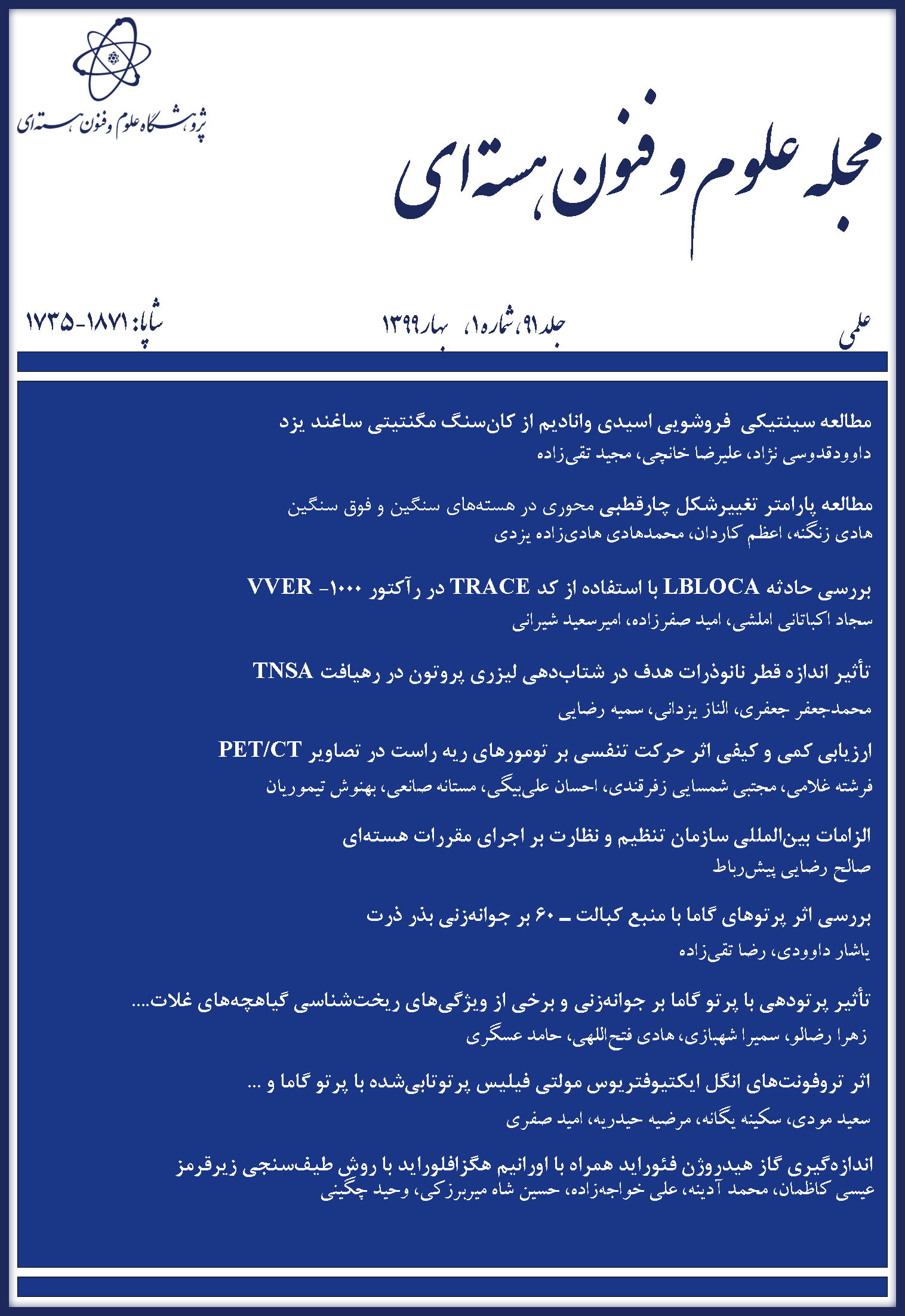نوع مقاله : مقاله فنی
نویسنده
پژوهشکدهی مواد و سوخت هستهای، پژوهشگاه علوم و فنون هستهای، سازمان انرژی اتمی ایران، صندوق پستی: 8486-11365، تهران ـ ایران
چکیده
استفاده از لیگاندهای حلقوی یکی از روشهای نسبتاً جدید جداسازی ایزوتوپی میباشد. اترهای تاجی و کریپتاندها، بیشترین کاربرد را در این گونه جداسازیها داشتهاند. کریپتاند [2.2.2] یکی از ترکیبات خانواده کریپتاندها میباشد که برای تشکیل کمپلکس انتخابی با برخی کاتیونها به کار رفته است. یکی از قابلیتهای کریپتاندها تفاوت سرعت و پایداری پیوند آنها با ایزوتوپهای مختلف یک عنصر میباشد. این پدیده که به اثر ایزوتوپی معروف است سبب توانایی این ترکیبات برای جداسازی ایزوتوپها میشود. در این پروژه اثر ایزوتوپی استرانسیم در سیستم استخراجی جامد- مایع با استفاده از جاذب پلیمری مریفیلد عاملدار شده با کریپتاند [2.2.2] مورد بررسی قرار گرفت. اثر پارامترهای مؤثر بر فاکتور جداسازی شامل نوع آنیون، غلظت استرانسیم، زمان تعادل، زمان بازیابی، pH و دما مورد بررسی و بهینهسازی قرار گرفت. نتایج نشان دادند فاکتور جداسازی با جرم ایزوتوپ رابطه عکس داشته و برای ایزوتوپهای سبکتر، این فاکتور بیشتر میباشد. تحت شرایط بهینه، فاکتور جداسازی برای ایزوتوپهای Sr88Sr/84 ،Sr88Sr/86 وSr88Sr/87 به ترتیب 028/1، 017/1 و 014/1 به دست آمد.
کلیدواژهها
عنوان مقاله [English]
Strontium isotope effect on Solid-Liquid extraction system using a polymer resin with 2.2.2-Cryptand anchor groups
نویسنده [English]
- E. Zolfonoun
Materials and Nuclear Fuel Research School, Nuclear Science and Technology Research Institute, AEOI, P.O.Box: 11365-8486, Tehran - Iran
چکیده [English]
The chemical isotope exchange with macrocyclic polyethers is one of the relatively new methods for isotope separation. These separations are based on the phenomenon of isotope effect, in which the kinetic and the stability of the complex formation between the ligand and the isotopes of an element are different. In particular, crown ethers and cryptands, with high affinity and size selectivity for some metal ions, have been investigated for isotope separation in various extraction processes. In the present study, the isotope effect in a solid-liquid extraction of strontium with Merrifield resin having 2.2.2-Cryptand anchor groups was investigated. The effects of various experimental parameters such as pH, concentration of strontium, type of anion, equilibrium time, and temperature on the separation factor of strontium isotopes were studied and discussed. The results showed that the separation factor had an inverse correlation with the isotope mass and for the lighter isotopes this factor was greater. Under the optimum conditions, the separation factors for 84Sr/88Sr, 86Sr/88Sr, and 87Sr/88Sr were 1.028, 1.017, and 1.014, respectively.
کلیدواژهها [English]
- Strontium
- Isotope effect
- 2.2.2-Cryptand
- Polymer resins

